Give a Listen Radio Eye Gives the Visually Impaired a Chance to Experience
Current Print News and General Interest Programming


A History of Helping
Family & Children’s Place recently celebrated its 140th Anniversary

Give a Listen Radio Eye Gives the Visually Impaired a Chance to Experience
Current Print News and General Interest Programming


Family & Children’s Place recently celebrated its 140th Anniversary
“TRIANGLE PARK” TELLS THE STORY OF THE FIRST NFL GAME PARTICIPANTS - INCLUDING SIX RELATIVES OF MIDDLETOWN RESIDENT MATT LUCAS

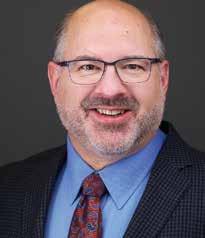














• We offer beds that are Medicare and Medicaid certified.
• We offer both inpatient rehab & continued outpatient rehab services.
• All rooms have electric high/ low beds and cable TV.
• The full in-house rehab unit provides PT, OT, ST.
• Admissions can be processed 24/7.
• Nurses are on duty and onsite 24 hours a day.
• Private rooms are available for short-term rehab.
• Newly added semi-private rooms are available for long-term care.


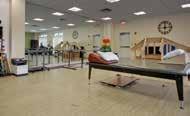
As the premier 162-bed skilled nursing facility in Louisville, Kentucky, Valhalla Post Acute provides compassionate and personal skilled care 24 hours a day. We specialize in providing rehabilitation services in our state-of-the-art facility to help our residents regain their independence and return to the highest level of function possible. We have been proudly serving the community for 13 years.
VISITORS ARE WELCOME EVERY DAY OF THE WEEK.
Come to see our residents and friendly staff in action. Feel free to contact us to learn more about the unique, sophisticated healthcare environment at Valhalla Post Acute.
valhallapa.com
300 Shelby Station Drive
502-254-0009

Thumbing through a magazine, newspaper or book provides hours of reading enjoyment for many, yet there are those who are not able to read the printed word because of blindness or other factors affecting sight. That’s where programs such as Kentucky’s Radio Eye come to the forefront.
Radio Eye is a radio reading service that began in Lexington more than 33 years ago. They broadcast the reading of current news, public service and general interest articles to people who are blind and print-disabled.
This idea was the brainchild of Al Crabb, a professor at the University of Kentucky. When he would go to Tennessee to visit his dad, who was blind, he took notice of his father listening to people reading newspaper articles and other publications. He began to wonder if Kentuckians could also benefit
from this type of programming.
“In the beginning it was on a closednetwork radio system,” says Lucy Stone, executive director for Radio Eye. “WUKY was our first original partner, and we broadcast off subcarriers. You couldn’t pick us up in your car. You needed to have a specialty radio because it’s tuned to that specific channel.”
Technological advances have enabled Radio Eye to switch from closed-network radios to an internet system. “Our listeners now use an internet radio that still looks like a radio but with the clarity of listening online,” Stone explains.
Crabb took the idea to the university, where he received their support in starting the service. The process was set in motion, but to accomplish this project he needed to
find volunteers interested in reading and recording news articles and books. Crabb put out an all-call through the HeraldLeader newspaper in Lexington. He began to recruit university professors, college kids and interns.
According to Stone, Crabb put his potential volunteers through a rigorous reading audition.
“He had them read 100 words, plus several phrases and different articles,” she says. “Crabb would go through and correct the people, the way they pronounced words and their cadence. He was quite the stickler as he wanted to make sure that they were putting out quality programming. Back then it was difficult trying to correct reading errors. Nowadays, if there’s a mistake, we can fix it very, very quickly.”

During the past three decades, the Radio Eye team has made great strides in reaching out to other portions of the state to offer services. Stone says they currently have about 10,000 listeners across Kentucky. After initially establishing the program in the mid-state area, the program began to spread to other cities and counties in the commonwealth.
“Louisville was our next outreach area,” she says. “Then in 2014 we expanded out to eastern Kentucky, which took us all the way down to Pikeville, and a few years after that we expanded into the Morehead area. During the pandemic we launched our final stream, which took us to Paducah. Even in the middle of a global shutdown we became a statewide service, and we’re incredibly proud of that.”
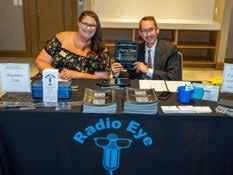
The process to become a Radio Eye volunteer has changed vastly over the years, according to Stone.
“One of the first things we’re going to ask is, ‘What kind of a reader do you want to be? Do you want to be an in-person reader or a remote reader?’” she says.
Stone explains that people can either come into their studios to record using their software, or they can do it from their home or office.
“In order to do it at home, you have to be confident in your ability with technology,” she says. “I’ve streamlined it so that it is incredibly easy. That’s something of which I’m very proud. You don’t need to have a recording studio at home. Technology has


changed so much that everything is really built in. We have a lot of people who record in their closets.”
Radio Eye currently has 200 volunteers who not only read, but also do outreach such as speaking to the public and seeking donations.
Louisville resident Chris Clements actively seeks out new volunteers to be readers or to perform other tasks such as community outreach. Clements is a board member for Radio Eye, a volunteer reader, and employed as the coordinator for the Retired Senior Volunteers Program through AmeriCorps.
“I’ve been involved with Radio Eye for about six years,” he says. “My involvement




began when I was in my current job for about one year or so, and I received an inquiry from Radio Eye. While they have their larger headquarters in Lexington, they do have a satellite office in Louisville, and they had just opened their studios. They wanted to build their base and their exposure, so they approached me to see if I could help them recruit some older volunteers in Louisville to do the recording sessions.”
Clements was on board to help them find local volunteers. He says they received interest from six volunteers. Before COVID-19 hit, their numbers were up to 10 or 12 volunteers who were actively doing recording sessions, but because of the pandemic, that number scaled back to about three or four. Today, 85 to 95% of the local volunteers are from Jefferson County, but they also have volunteers from southern Indiana, Oldham County and Bardstown. As of this writing, the Louisville studio is closed until they hire a new office
manager. Those interested in volunteering are encouraged to apply, as recording from home is still an option.
Alice Dehner, who lives in Lexington, is the secretary of the Radio Eye board of directors. She became involved when a dear friend with macular degeneration died. “She loved being read to, and volunteering with Radio Eye allowed me to read to a larger number of those unable to comfortably do so on their own,” she explains. “After many years of volunteering, I was asked to join the board.”
She says that she read the Herald-Leader for about four years in the studio with two others. When COVID-19 struck, she and her husband both continued to read the Thursday and Saturday morning paper, but remotely from their home. She also read magazine articles, local county newspapers, magazine articles and books. She and friends also taped plays through their group, The Signal Theater, for airing during the holidays.

In Louisville, other programs include recordings of the Oldham Era and Spencer Magnet, Sentinel News, Kentucky Standard, LEO Magazine, News and Tribune, Springfield Sun, and Henry County News.
Specialty programming for all areas includes “Children’s Hour”, “Sports News”, “American Past”, “The Pet Corner” and more.
There are several ways to listen to Radio Eye. They include streaming on radioeye. org; Alexa Skill: “Radio Eye Live” via Victor Reader Stream; NFB Newsline (to register, call 866-504-7300; toll-free telephone broadcast, 800-238-5193, ext. 2 for Louisville, or 518-906-1519.
If you’d like more information about Radio Eye, go to radioeye.org, or call 859-422-6390 or 800-238-5193, ext. 0.








project; it’s a heartfelt mission to create a haven that feels like home.
Step into the vibrant transformation at Arcadia Senior Living in Louisville, where the community and team have been on an exhilarating journey over the last six months. Brian Durbin, the president of Arcadia, took the reins in the summer of 2023 and has been orchestrating a symphony of enhancements ever since.
This isn’t just about a facelift; it’s a profound revitalization. Durbin and his dedicated team are not only giving the community a fresh look with a splash of paint and upgraded landscaping, but are also weaving a tapestry of warmth and care into the very fabric of Arcadia.
As a locally owned and operated gem, Arcadia prides itself on a personalized approach. Durbin emphasizes their commitment to quality dining, dynamic social activities, and the cultivation of meaningful connections with residents and their loved ones. This isn’t just a
“While we’re making great progress on the physical plant, the relationships we build with our residents and their families, and the support we provide them to live independently and enjoy life, is what matters most,” said Durbin.
Durbin’s enthusiasm is infectious as he shares his vision for a community that values relationships over renovations. The goal is not just to create a physical space, but also to foster an environment where residents thrive emotionally and socially. It’s about crafting a narrative of active living, where every day is an opportunity to create cherished memories.
“It goes back to building meaningful and deep relationships,” Durbin said. “The continuity and familiarity of people and friendships formed is a great value. We’ve seen the negative impact that loneliness and isolation can cause our seniors, and feel like
our campus offers a great solution for those looking to continue to stay active and enjoy life.”
Durbin’s advice to families is simple but profound: explore and experience. Visit multiple locations, feel the atmosphere, and connect with the people who will be an integral part of your loved one’s journey.
Arcadia isn’t just a place to live; it’s a vibrant community where residents become family, and the atmosphere resonates with warmth and genuine care. It’s not just a retirement community; it’s an invitation to a life well-lived, surrounded by people who care deeply about the well-being and happiness of every resident.


Ultramarathon running isn’t for the faint of heart. Ultramarathons are classified as any foot race over the standard marathon distance of 26.2 miles, with some as long as 100 miles. Tavi Wallace says she started running at a young age because she wasn’t great at other sports. She started competing in second grade, but by college she was burnt out and lacked the passion to run again.
“When I moved back to Louisville, a friend asked me if I had ever considered trail running,” Wallace says. “I had hiked before but never thought about trail running, but they’re the same kind of community of people. Once I got started, I fell in love with it.”
Wallace recently competed in the Javelina
Jundred on October 28 and 29 in the Sonoran Desert in Arizona. The race is a 2024 Western States Endurance Run qualifier and Golden Ticket Race. The field of runners is highly competitive, and the race is so famous that participants are drawn from a lottery.
“I was on my laptop at midnight on January 1 signing up for the lottery,” Wallace says. “The race is so popular that only two of us from Kentucky were chosen. It’s hard to get in, but the race itself is even harder to finish. Only about 50% of the runners complete the race.”
The trail itself is a mix of hard-packed granite, rocks and sand.
“The three loops are essentially the same so you start memorizing the scenery,” Wallace says. “I started knowing which cactus was which when I would run past them. I could also mentally prepare, knowing I would be finishing my water at a certain point but there would be a spot coming up to get broth or Gatorade. I like to know exactly when I would get my nutrition or electrolytes.”
Wallace started in the first wave of runners at 6 a.m. on Saturday and ran through the afternoon, evening and Sunday morning, finishing around 5 a.m. Wallace says she not only had to train for the distance, but also prepare mentally for the desert weather.
“There is no way to mimic the desert
weather except to just plan for it,” Wallace says. “The desert doesn’t really retain heat, so when you start out in the morning, it’s cold. Then as the day goes on it gets hot, and then cold again as it gets dark. Luckily, I used to live out there so I knew what I needed.”
As it turned out, she needed 10 pounds of gear including headlamps, clothing, water and electrolytes. Wallace says she trained for the additional weight, but it still strained her back during the race. The temperatures varied from 40 degrees in the dark, early morning hours, to the 90s during the hottest part of the day.
Wallace says she prepared herself by completing extremely long runs during the hottest part of the day. She says she also did night training and caffeine fasting. She abstained from caffeine the week before to lower her tolerance.
“A lot of us stop drinking caffeine the week before an ultramarathon and then introduce it at a certain point throughout the race,” Wallace says. “I called it the witching hour. I waited until about midnight when I started getting sleepy while running.”
Her coach challenged her to run the

entire race without her smartwatch. She says she relied on her intuition and what her body told her. After that many hours of running without sleep, the brain starts slowing down, Wallace says. So, it’s crucial to complete the race with a pacer. She says she thought she would just be listening to music but the pacer played a much more critical role.
“Some people can actually get lost during a race due to sleep deprivation, so that was
nice to have someone I could just follow without overthinking,” Wallace says. “The pacer’s capacity is 100% because they’re only completing a portion of the race, not all of it. It was nice to have someone to talk to while running to keep my brain engaged. These people don’t get the accolades they deserve.”
The Sonoran Desert is home to several varieties of animals and insects one might encounter during the race, including the









race’s namesake, a javelina. Wallace says she’s glad she didn’t run into one because the wild pigs are known to be aggressive.
“I did see a rattlesnake at the beginning of the race,” Wallace says. “I did see a tarantula too, but at that point in the race I was so tired I couldn’t even move out of the way of it. My pacer got a photo of it because it was so big.”
With a race so intense and a completion rate of about 50%, Wallace says she was on cloud nine once she finished. She says she wanted to devour food once she was done, but her body wasn’t ready. She says she drank milkshakes until her body was prepared for food. Wallace needed time for her body to recover, so she spent a few extra days enjoying the desert weather and relaxing by a pool.
“During the race and even before, you have to stay on top of your nutrition and hydration,” Wallace says. “The medical team will pull people out of the race for their safety. Some of them dropped during loop three, during the hottest part of the day. I don’t think I’ve ever been as proud as I was to finish the race, and I’ve raced a lot.”
Wallace says ultramarathon running takes a specific personality type. She says many competitors have had issues with


YOU HAVE TO STAY ON TOP OF YOUR NUTRITION AND
addiction or eating disorders in the past. Wallace says only a few people run 100 miles just for fun. She says with trail running, you don’t just need your body, but your brain as well. Wallace calls it complete sensory stimulation.
The Javelina Jundred is Wallace’s second ultramarathon, but does she have any more in the future? As of right now, she’s unsure. She says the training needed takes up an excessive amount of time.
“My first ultramarathon was in 2021, so you kind of forget as time goes on how much time and effort it takes to get ready for one,” Wallace says. “It’s very time-consuming, on top of just how hard the race is. To say I had no life during training is an understatement. It took up a lot of hours on my weekends.”
Wallace says she plans to serve as a pacer for her friends because they’ve served as one for her. She’s open to possibly completing a new, different ultramarathon if the right one presents itself. In the meantime, she plans to continue running and participating in shorter races.



A new documentary will tell the story of the National Football League’s beginnings, showcasing the untold story of the league’s inaugural game more than a century ago.
Named for the stadium in which the game took place, “Triangle Park” features many prominent NFL and media figures, and interviews with descendants of the two participating teams’ rosters, the Dayton Triangles and the Columbus Panhandlestwo of the NFL’s original 14 teams.
One of those featured is Louisville resident Matt Lucas, the great-grandson of the Panhandles’ Phil Nesser. Lucas had six relatives participate in the NFL’s first game, which took place in Dayton on October 3, 1920, with the Triangles defeating the Panhandles 14-0. He is excited to see the story told in “Triangle Park.”
“The documentary really came together when the creator and the director of the film, Allen Farst, ran into a couple of folks in Dayton,” Lucas said. “He talked to a couple of descendants and heard the story, but he’d never researched it. Allen started
digging into the game, and researched how pro football was in 1900 or so until the first NFL game.”
Lucas, a former University of Kentucky football player in the 1980s, is interviewed in the documentary and plays a couple of roles during reenactment scenes, including the portrayal of Ted Nesser, his great-uncle and the Panhandles’ coach. Lucas met Farst, an American director known for his work with sports, music and documentary films,
Writer / Gavin LaPaille Photography Provided Matt Lucas
at a Nesser family reunion, and gradually grew more involved with the project.
Farst had interest in the Nessers due to their prominence during the time period and the significant roles they played in the NFL’s inaugural game. Known as the “first family” of professional football, the Nessers have the most combined years and the most pro championships of any family in NFL history. The Panhandles were built around the Nesser brothers for nearly two decades, leading a team known as one of the generation’s best. A plaque recognizing the family’s accomplishments is displayed in Canton, Ohio, at the Pro Football Hall of Fame.
“The Nessers were six brothers who played pro football from the 1900s to 1926,” Lucas said. “They were the best and the biggest name in professional football at that time and were on the Columbus team. They would work on the railroad all day and then play in these area games. They would hop a ride on the railroad and played the majority of their games on the road, being the attraction for other cities.”
The film is narrated by sports broadcaster Michele Tafoya, and features other big names from past and present NFL history including Chris Collinsworth, Eric Dickerson, Joe Buck and Tony Dungy, among others. The film debuted at AMC Theaters in all 32 NFL host cities the day before Thanksgiving, and “Triangle Park” will eventually be available to stream on Amazon Prime and Apple TV+.
“It really started out as a small documentary and has grown into national prominence,” Lucas said. “Things kept being added and added. It’s a who’s who of Hall of Famers and media personalities. You name it, they’re in it. The film started out as a local story and has grown into this giant thing that a lot of people wanted to get involved with.”
In addition to the football aspect of the documentary, “Triangle Park” will highlight other aspects of the time period, including prohibition and women earning the right
to vote. The film illustrates how different life was for the first NFL players compared to what it is today, when equipment and pay were not nearly up to par with current times.
“My family worked on the railroad, and one of the biggest stories in this film is they show up and are ready to kick off this game, and no one had a whistle,” Lucas said. “Since we worked in the railroad, we had a whistle. They had to use a railroad whistle to play the







game. There are all these intermingling stories about how this was a changing of the guard because there was a new crop of players coming along. A lot of them had known each other a very long time, so you had all this drama and competing towns. The film touches on the social issues, football issues and political issues, and how the game brought all this together.”
In keeping with the family tradition, Lucas has spent much of his life around athletics. In addition to playing football at UK, Lucas has worked in the athletic departments at the University of Evansville, Virginia Tech and Eastern Michigan University, and also was a field tester for Nike. All his life, Lucas was told about his family’s historic connections to pro football, and frequently made trips to Canton and to Triangle Park, which is now home to youth baseball fields, when he was younger. Lucas said he knows there are many like him who have a huge interest in football, and believes the film will have wide appeal to those who make it their routine to watch games each week.
“It’s the passion to know how and why we got where we are,” Lucas said. “We are a football-loving country and it is our passion. No other country on earth



understands it like we do. There isn’t one sport that demands as much physically and mentally, and is as interdependent on each other as football is. Nothing works in football unless 11 people work together in complete unison. People will want to see this.”
While the NFL is currently a huge enterprise, its beginnings were not as promising, as the league struggled in its early years. “Triangle Park” shows some of the origin story of the league that many know and love today.
“We want many people to see it and be inspired by the story - to see where the NFL started and a lot of businessmen from Columbus and Dayton pulled together all these people to form this league,” Lucas said. “Starting from very humble beginnings to now being the elite sports league on this planet is nothing short of phenomenal. The first NFL headquarters was in Columbus. The first commissioner was Joe Carr and
he was the manager of the Panhandles. He knew we could make this league a longstanding, viable organization that people wanted to see.”
Lucas said he is very excited to see the story of the NFL’s first game - and his family’s large role in it - reach a wider audience, and connect with others who also have strong connections to the inaugural game.
“The most enjoyable part is simply to watch a story that was untold now become a real
story,” Lucas said. “There’s only one first game, and only two teams that played in that game. Somebody had to have a lot of guts and determination and faith to go against the establishment. To see my family involved and know what they went through to play a game they absolutely loved is great. It’s nice to see a group of people bound together for something they believe in. Those are the greatest stories. It’s awesome to see how the NFL has matured and how my family has been part of that.”








Sponsored By:

DOWN
1. Cavern sight
2. I problem?
3. High school subject
4. Bank loan security
5. Calculator, at times
6. Go unsteadily
7. Full of guile
8. Doctor’s orders
9. Beginning to freeze?
10. Aggressively publicize
11. Blood category
19. Coffee preference
20. Base caller
21. Pouches
22. Leaky faucet sound
24. Software error
26. Wanders
28. Annoyance
29. List
30. Dress-uniform part
32. Frost’s bite?
34. Thousand ___, Calif.
37. Ruined
39. Expected outcomes
40. River through Tours
42. Spoil, with “on”
43. It’s within your range
44. Word with heat or meat
46. Biblical conclusion
48. French beverage
50. Haole’s souvenir
51. Cheerleader’s asset
1.
47. Superior to 48. Deck
49. Chalet site, perhaps
52. Club
53. “Take this!”
54. Born in France?
55. Bounds
56. “Paradise Lost” setting
57. Bonus for waiting





Through the Great Depression and, much later, the 2020 COVID-19 pandemic, Family & Children’s Place has long been dedicated to protecting and healing the community.
Last year, Family & Children’s Place celebrated its 140th anniversary, making it one of the oldest nonprofits operating in the state. Throughout the course of its existence, the nonprofit took on many different names as it established itself and found its specialty in aiding families.
Continuing to ensure the organization can serve the community for over a century has taken a lot of work and dedication.
“This kind of work is important because I just believe every kid deserves the best they can have,” said Pam Darnall, CEO. “They deserve every opportunity - the same opportunities as kids who come from better-resourced neighborhoods and betterresourced homes,” she continued, noting that this does not mean that child abuse and neglect only occur in under-resourced homes.
Darnall has been with the company for nearly 30 years, spending 10 of them as CEO. The organization serves 30 counties in Kentucky and 10 counties in Indiana, operating out of several offices and satellite locations. The main campus is located in downtown Louisville in the building it owns at 1000 South 5th Street.
The group has also had a presence at the YMCA on 18th Street and Broadway downtown since the facility opened in 2019. Darnall recalls being present for the groundbreaking and grand opening of the building.
Being located at the YMCA allows Family & Children’s Place to provide mental health services to underserved populations.
The organization offers free individual, family, group and school-based counseling to its clients. Interventions offered include play therapy, trauma-focused cognitive behavioral therapy, eye movement desensitization and reprocessing, narrative therapy, and motivational therapy.
“Mental health impacts every one of us,”
Darnall said. “I’ve been a Y member for 30 years and I definitely believe that both our mental and our physical health are directly connected, and being in a location with already existing partners is how we want to be.”
Partnerships play a significant role in the organization and its impact on the community. Some other partnerships include Metro United Way, Community Coordinated Child Care, Norton Healthcare and Baptist Health Floyd, among many others.


“We are all about collaborating and working in partnerships with other organizations,” Darnall said.
An in-home service that the organization formed as a partnership with the Louisville Metro Department of Health and Wellness in the mid-1990s has since become a statewide program in Kentucky.
Family & Children’s Place (then called Family and Children’s Counseling Centers) developed HANDS (Health Access Nurturing Development Services) to provide additional support to new and expectant parents.
“It’s really to help new parents and parents to navigate the challenges of parenting, and to help them to have safe, loving, nurturing homes,” Darnall said. “That’s important because that really is how children are safe. That’s how they grow up in happy, healthy
homes: when parents have the supports they need.”
By 2003 the Cabinet for Health and Family Services implemented the program across the state. The state department handles the program across the state, and Family & Children’s Place still operates HANDS in all of Jefferson County.
Over 400 families took part in HANDS at Family & Children’s Place in 2022, with 59 families graduating from the program, according to the organization’s yearly impact report.
In 2022 HANDS was almost the highestexpensed program for the organization, second only to Greater Louisville Head Start, which encompassed over half of 2022’s expenses.
Family & Children’s Place has worked over




the last four years to bring Head Start back to Jefferson County in partnership with Community Coordinated Child Care.
“We work with five different child care centers in various locations, in all underserved locations, to make sure that there are services in areas that sometimes don’t have adequate services,” Darnall said.





birth to age 3 reach school readiness and supporting the family’s well-being, with the option of in-home instruction. Head Start works with children up to age 5 at the five child care centers.
In 2021 the program was able to serve 305 families, totaling 343 children. Darnall said the group’s goal is to aid 500 children through Head Start programs when classrooms are fully staffed.
Family & Children’s Place also looks to help children older than 5 years old thrive academically and mentally, through schoolbased programs. The programs are aimed at educating children and their caregivers about emotional literacy, substance abuse prevention, leadership and family support, by partnering with groups like Kentucky Career Center, First Financial Bank, Louisville Visual Arts and Louisville Orchestra.
The organization currently has a presence at three schools in Kentuckiana: Meyzeek Middle School, Engelhard Elementary School and Hazelwood Middle School.
Another service Family & Children’s Place offers in both Kentucky and Indiana is the Child Advocacy Center. The center is present at the organization’s main campus downtown called Kosair Charities Child Advocacy Center, in the new Jeffersonville office, and at Baptist Health Floyd in New Albany. The centers help children that have experienced sexual abuse, human trafficking and severe physical abuse.
The Kosair Charities Child Advocacy Center shares its location with Louisville Metro Police Department’s Crimes Against Children Unit and child protective services. The center also has prosecutors, medical experts and mental health clinicians on-site, according to the Family & Children’s Place website.






Those interested in supporting Family & Children’s Place can volunteer their time for the organization. Darnall said volunteers can help in a variety of ways such as helping to answer phones, fill mailers and prepare for events.
Volunteers are also able to help with the school-based services, for those who want to work hands-on with children and families.
Family & Children’s Place has been able to help families across Kentuckiana, but Darnall noted that it has been difficult obtaining enough funding to fully support the community’s needs.
“We really have had to significantly reduce the mental health services that we can provide,” Darnall said. “In fact, we’ve had to reduce our mental health services by 50% [over the last two years].”
While the community has been a great




support for Family & Children’s Place, Darnall said there are two main issues when considering funding. “Donating over the past year across our country has trended down, and so fewer people have fewer dollars to give, and we absolutely understand that,” Darnall said. “But the


other issue is that often when nonprofit organizations are able to get grants, they are extremely restricted on how they can be used.”
If an organization cannot use funds in the way specified by a local or federal grant, then the money has to be returned. Darnall said that often, grant funds that Family & Children’s Place received could not be used on salaries.
Restrictive grants can prevent nonprofits from having the luxury of deciding how to reinvest in their company, be it through raises or building expansions, which hampers the ability to help the community, according to Darnall. “That entity, especially one that’s been around for 140 years, knows how to do its business really well,” Darnall said.
Despite the financial challenges that the organization has faced over the last few years, in 2022 alone, Family & Children’s



Place was able to serve 2,270 families and 4,275 individuals, and continue its nearly century-and-a-half-long legacy of helping the community.
“There are organizations that have a historical impact on our community, and we’re one of those,” Darnall said.
To learn more, go to familyandchildrensplace.org.











 Writer / Erin Kinnetz Photography Provided
Writer / Erin Kinnetz Photography Provided
If you are a native plant lover, now is the time to head into the forest in search of spring ephemerals. These shy beauties have a very strange life cycle that helps them to get the nutrients and sunshine they need on the competitive forest floor. Instead of trying to compete with trees and shrubs through the summer and fall, these flowers pop out before the trees have budded out in spring, when forest floor is relatively bare. Some of these plants, like the yellow trout lily, will even complete all their food making, flowering and seed making for the year, in a brief two-month window, and then return to dormancy underground until the next spring. For many of our harmless, native bees, these flowers offer the first foods they will eat after winter. For us naturalists, it’s a welcome sight as we look forward to warmer weather and greener, fuller forest scenery.
So far, we’ve spotted toothwort, blue phlox, Allegheny spurge, rue anemone, and harbinger of spring. Soon we will see twinleaf, bloodroot, wild hyacinth, trillium, yellow trout lilly and more. While you may see spring ephemerals in many places, some of the best trails to check out for spring ephemeral sightings include the Moss Gibbs Woodland Garden in Broad Run Park, Wild Hyacinth and Paw Paw trails in Turkey Run Park, and Coppiced Woods Trail in Beckley Creek Park. Head out into the forest soon, as we only get a brief window to see these strange flowers!


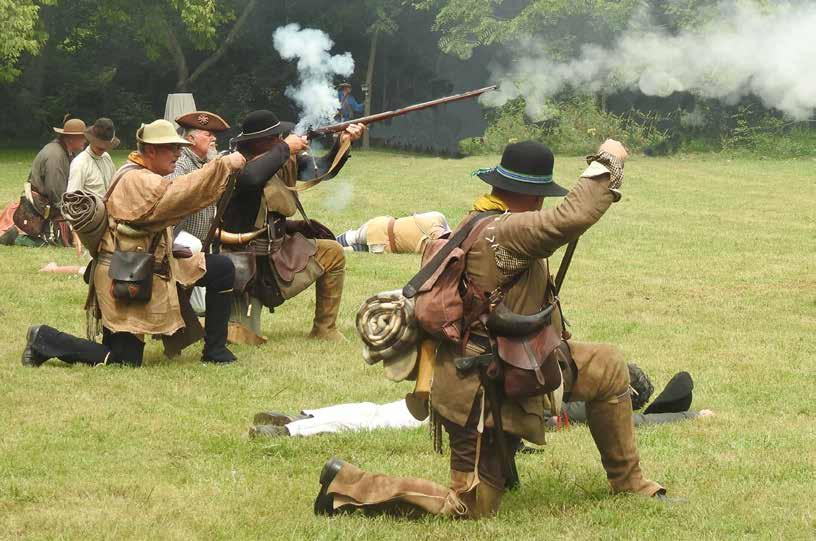

John Floyd was an early settler of what is now St. Matthews. A pioneer statesman, surveyor, colonel in the Kentucky militia, and prominent in laying out the city of Louisville, Floyd can be remembered for many things.
He was born in 1750 in Amherst County, Virginia, to William Floyd and Abadiah Davis, both descendants of Welsh immigrants. He married early at the age of 18 to Matilda Burford, daughter of the sheriff of Amherst County. She died a year later giving birth to a daughter, Mourning Floyd.
Writer / Helen E. McKinney PhotographyBy 1772, Floyd had moved to Fincastle County, Virginia. where he taught school and lived in the home of Colonel William Preston, his mentor. Preston was a distinguished figure on the Virginia frontier and surveyor for the western part of the state. Two years later he commissioned Floyd as a deputy surveyor and appointed him chief of a seven-member surveying party headed to the Falls of the Ohio. Kentucky was a part of Fincastle County at that time.
A member of the surveying party, Thomas Hanson, kept a journal of the experience. Hanson kept records of how the party met up with bands of Natives in the forest, dining on a feast of bear meat, of Floyd laying off 2,000 acres of land on the Cole River for Colonel George Washington, and of lands surveyed in what was to become Kentucky for Patrick Henry and other prominent men. Floyd’s mission on this trip was to make a survey of the bounty lands offered to veterans of the French and Indian War. Eventually Natives drove the party back to Virginia.
In 1775 Floyd came to Kentucky again, via the Cumberland Gap. During the following summer he was living at Fort Boonesborough and participated in the rescue of Jemima Boone, Daniel Boone’s daughter, in July of 1776. He returned to Virginia once more, but would make his way back to Kentucky in 1779 with several siblings and his new wife, Jane Buchanan, Colonel Preston’s niece. He and Jane had three children.
He had returned to claim 2,000 acres he had purchased in 1774. With his family, he built a cabin near Third and Main streets in present-day Louisville as a temporary shelter. He soon established a settlement near Beargrass Creek known as Floyd’s Station, in present-day St. Matthews near Breckenridge Lane, and 10 more families settled there with him. All that remains today of the station are a spring house and cemetery.
In 1780, by an act of the Virginia General Assembly, Floyd became one of seven trustees of Louisville, thus enabling him to

assist in laying out the city. In 1781, General George Rogers Clark convinced Governor Thomas Jefferson to appoint Floyd as colonel of the Kentucky militia, justice of the peace, and surveyor of Jefferson County.
On September 13, 1781, a party of roughly 50 Miami Natives who had separated from a larger group two days earlier and were spurred on by the British, attacked settlers as they evacuated Squire Boone Jr.’s Painted Stone Station in Shelby County. The settlers were fleeing to Lynn’s Station, one of the Beargrass stations, and were attacked along the main ford of Long Run Creek, near the present-day site of the Eastwood Cemetery.
Several died but many also escaped and lived to tell their story of what became known as the Long Run Massacre. The

following day, Floyd led 27 men to the Eastwood/Middletown site in a rescue and burial mission. When they reached their destination, they were ambushed. Floyd narrowly managed to escape and the incident became known as Floyd’s Defeat. Historical records have noted that he rode a fine black horse called Shawnee into the defeat.
The next day, a force of 300 men from the Falls and Beargrass stations marched to the area and buried the dead from the first massacre and from Floyd’s militia rescue in mass graves. At the site of Floyd’s Defeat, the bodies were buried in a sinkhole with stones and tree limbs placed on top, in an effort to keep wild animals away. The names of the dead were said to have been carved on a nearby beech tree.




Two years later, in 1783, Virginia leaders organized the government of Kentucky and Floyd was appointed to be one of the first two judges of Kentucky. Sadly, he would not live to see the land achieve statehood. He was wounded on April 8, 1783, by Natives while traveling to Bullitt’s Lick. He died of his injuries two days later. At the time of his death, he had been wearing a scarlet coat bought from Paris, which his widow, Jane, preserved until her death in 1812. She had requested the coat be buried with her. It is thought that Floyd was buried near the site of Floyd’s Station.
All that remains to mark these harrowing real-life events is a historical marker about the massacre, and a monument erected to Floyd and his men. The monument sits off in a lonely field on the backside of town. If you’re there on a still September day and listen closely, you can almost hear Floyd as he shouted and swore, when he and his militia rode

This Creole Champion of St. Matthews, Lou Lou Food & Drink has thrived for years by delivering Louisville’s Louisiana connection in culinary delight. The New Orleans vibe is alive at Lou Lou on Market. The new concept continues its traditional Low Country cuisine, but Chef Cristian Garay adds his flair and creates a new menu.
812 East Market Street
502-515-9699

out of Lynn’s Station, “The first man to lose his gun this day will be hung!”
Floyd is remembered annually along with survivors and those who did not survive at the re-enactment of the Long Run Massacre and Floyd’s Defeat at Red Orchard Park in Shelby County. This year’s dates include Friday, September 6 (School Day, 9 a.m. to 1 p.m.; $4 per person - schools only).
Saturday, September 7 is open to the public from 10 a.m. to 4 p.m.



On Saturday a battle reenactment takes place at 2 p.m, and the public is welcome to visit the settler and Native camps, see a live cannon demonstration, prisoner exchange, and various demos of 18th-century heritage skills. As a special tribute, the Sons of the American Revolution present colors and descendants are recognized, all in tribute to those who gave their lives to settle the Kentucky Frontier. Admission cost for the Saturday event is $6 per adult, $3 for ages 3 to 12, and free for ages 3 and under.
For more info, to read the story of Floyd and his involvement in the Long Run Massacre, or to register for School Day, visit paintedstonesettlers.org.



Expires 5/31/2024
Expires 5/31/2024
If there is one budgeting category that people have a hard time with, it’s food…especially dining out. When you go to a restaurant, you’re not just paying for the cost of the food; you’re paying for the service, cleanup, tax, tip and markup. Something that would cost you $2.50 to make at home could easily cost you $25 at a restaurant.
Dining out adds up fast. I’ve spent countless hours doing research, experimenting, and seeking out best practices for how to get this under control. And don’t worry - I’m not advising you to stop eating out…that would be blasphemy! I’m here to show you some easy hacks you can implement right away to help you save on those large restaurant bills.
Tip 1:
Only drink water at restaurants. You can always buy tea, soda, or fix yourself an alcoholic beverage back at your house for a fraction of the cost.
Tip 2: Invest in a freezer. Often, the reason I eat out is because I just don’t want to cook (that’s a nice way of saying I’m lazy.) If you can relate to that, then start stocking up on frozen meals. Lasagnas, pizzas or healthy single-serve meals could save you from wasting money on takeout when you don’t have the time or energy to cook something.
Tip 3:
Avoid services like Postmates, Grubhub, Uber Eats and DoorDash. Not only are you paying all the extra costs of dining out, but you’re also paying a delivery fee and tip for the convenience. This can easily add another $5 to $10 to your meal. In fact, delete them from your phone altogether.
Tip 4:
When you order your meal, ask for a to-go box. Restaurant portions are enormous. It’s hard not to want to gobble down the entire meal right then, but more often than not, you walk away uncomfortably full. Save yourself from temptation by boxing up half your meal right when it comes out. That way, you get two meals for the price of one.
Even those who don’t eat out often can still struggle with their grocery bill. Plus, if you prefer certain brands or organic options, or you’re shopping for your family, your weekly grocery shopping bill can easily be hundreds of dollars.
Tip 5:
Avoid impulse shopping by using a curbside pickup service. ClickList with Kroger only costs $5, and Walmart pickup is free. You can order everything online ahead of time. That way, you ensure you’re sticking to only what is needed. No more getting up to the register and throwing in a couple candy bars (guilty!).
Tip 6:
Make your own freezer meals. Instead of spending $3.99 on single-serve meals, cook a casserole or batch of soup, divide leftovers into portions and freeze them. The next time you need something quick and easy, voilà!




The best part about being smart about your food budget is all the money you’ll be saving.
What are YOU passionate or excited about? Maybe it’s buying adorable baby clothes for your little one, or spoiling your dog, or shopping for new shoes, or buying that new small-batch bourbon. Start a fund for yourself and put a portion of the money you save on food towards that exciting reward. This will help you stay motivated.
And finally, there’s no time like the present! Implement these tips right away and see how quickly you can cut your food expense in half.
Rachel Richards is a real estate investor, former financial advisor, and bestselling author of two books on financial literacy: “Money Honey” and “Passive Income, Aggressive Retirement.” She is from Louisville.






Oh, hello there. What a beautiful day to meet up here, isn’t it? Were you able to find your free parking spot easily? I assure you, when Christmas comes around, it’ll be harder to find a spot; the city goes out of her way to decorate Brown Park in December.
But right now it’s late summer, several months away from the Christmas light angels and Frosty the Snowmen. And today the sky is clear and blue. The world may seem crazy, but step inside Brown Park in St. Matthews to find a little bit of normalcy, and a break from the chaos happening all around.
Here, on these award-winning 28 silent acres, you can even take a walk into the past. Throughout the park you’ll find trees dedicated to some who have gone before us.
We haven’t walked far, but if you’d like, we can take a rest on those stone blocks underneath the shade of the trees, or we can continue down the path toward the bridge that crosses Beargrass Creek. You’ve probably driven over it as you traveled on Browns Lane to get to the hospital.
 Writer / Andrew Toy Photography Provided
Writer / Andrew Toy Photography Provided
The little goslings are a few months old now and they’re waiting for some pieces of bread. The sign says we shouldn’t feed the birds, but that’s not stopping some of the other park-goers.
But I’d definitely abide by the sign that says no swimming in the river, tempting as it may be. When the rainwater gets high enough, the sewage can spill into the river. Definitely don’t want to go in there.
Do you want to see a hidden cemetery?
Come this way. We’ll walk along the river until the path veers off to the left. It’ll take us to a brick wall that circles a handful of tombstones. The gothic spear-tipped gate has a lock on it, so we can’t go up to them to read the inscriptions, but if you look closely you can make out the words on one of them: James Brown. You’ll have to use your phone to zoom in and see the rest of the fading markings.


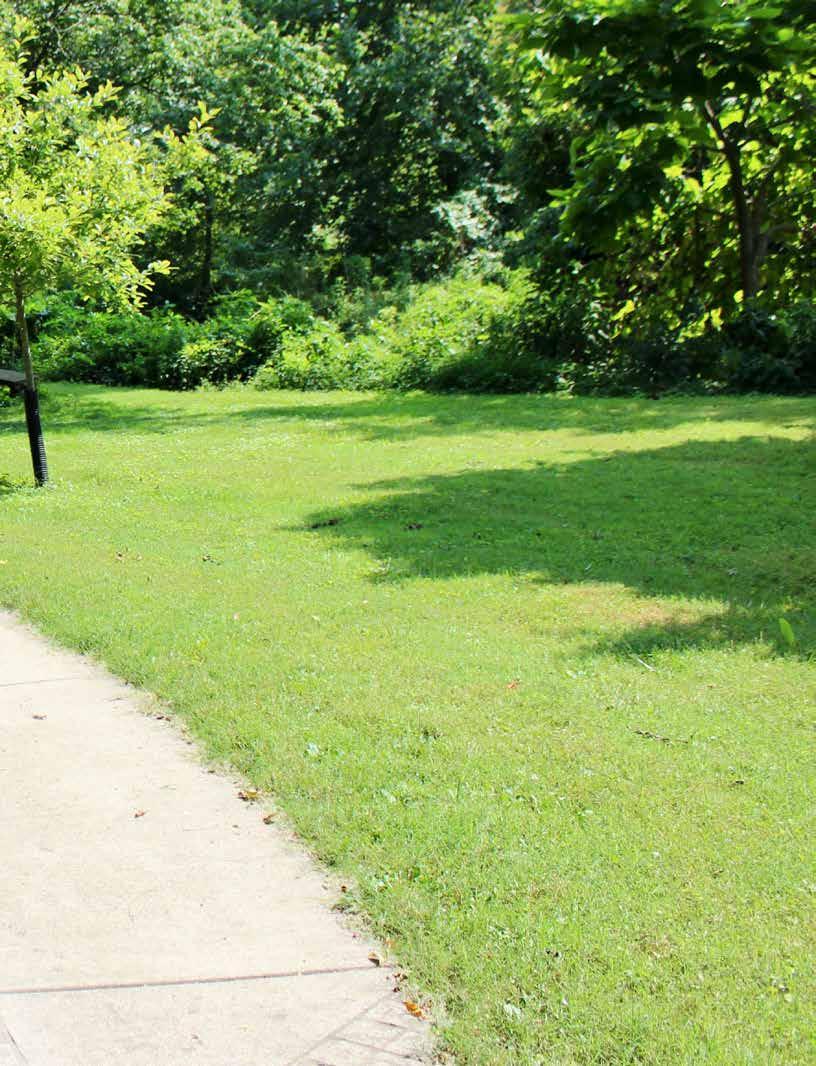


Could it be? Could this be the Mr. Brown of Brown Park? Turns out that yes, this is the resting place of the patriarch of the Brown family. Together, he and his wife, Urath, owned over a thousand acres of land between Shelbyville and Taylorsville roads by 1824. Do you know what that means? That means a big portion of St. Matthews is built on what was once James Brown’s property.
Let’s go back down the path we came up from, since the cemetery is as far as it’ll take us. We’ll wind back down toward the river and stroll underneath the tree canopy. You see those pillars of stone over there? The ones layered with different kinds of

rocks? They’re called the Interpretive Stone Columns, works of art that represent the three major geologic periods of limestone formation in Kentucky and Indiana.
There’s also a playground where one can sit and watch children play, or parents barbecuing on the grills provided underneath the pavilion. While we’re here, let’s give a silent thank-you to Kurt, Jeff, Matt, Talley and Cliff, five Boy Scouts who each worked on a section of this park to earn their Eagle Scout badge back in 1982.
As we near the parking lot, let’s not forget to pay our respects to Mr. Bernard Bowling,


who served as mayor of St. Matthews from 1958 up until his death in 1984.
And may we end our tour on a rather patriotic note? At the base of the flagpole, you’ll find a plaque that says the park is “dedicated to St. Matthews police officers both past and present.” I think it’s safe to say that we are grateful to the officers who are currently putting their lives on the line to serve and protect all residents of St. Matthews and the surrounding areas.
When we slow down and take the time to look around us, we can all find so much to be grateful for.




































The UofL Health Orthopedic team are the go-to experts for advanced, tailored treatment plans with less recovery time. In fact, we lead the state in robotic surgical procedures that can minimize pain and improve quality of life in record time. We are renowned for high-level care and customized surgeries that treat everything from shoulders to toes, including spines. And as the official health care provider for UofL Athletics, we provide that same VIP care to every patient. With access to specialists all in one place, it’s a win-win-win for the fastest journey to recovery.
UofLHealth.org today.
Kevin Harreld, MD Orthopedic Surgeon